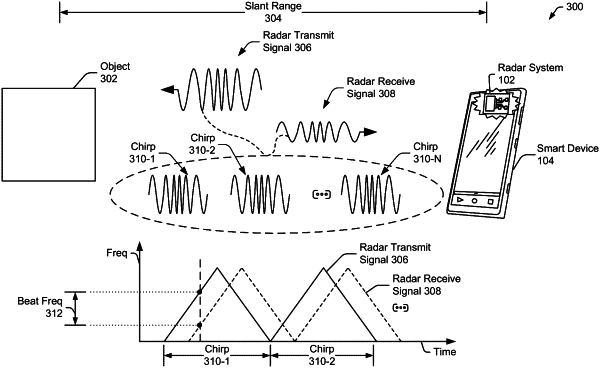| CPC G06F 3/017 (2013.01) [H04L 27/103 (2013.01)] | 20 Claims |

|
1. A method comprising:
transmitting a radar transmit signal comprising multiple frames, each frame of the multiple frames comprising multiple chirps;
receiving a radar receive signal comprising a version of the radar transmit signal that is reflected by a user;
generating, based on the radar receive signal, complex radar data for each frame of the multiple frames;
providing the complex radar data to a machine-learned module;
processing, by a first stage of the machine-learned module, the complex radar data across a spatial domain on a frame-by-frame basis;
generating, by the first stage of the machine-learned module and based on the processing of the complex radar data, a frame summary for each frame of the multiple frames, the frame summary being a one-dimensional representation of the complex radar data associated with a corresponding frame of the multiple frames;
concatenating, by a second stage of the machine-learned module, multiple frame summaries to form a concatenated set of frame summaries;
processing, by the second stage of the machine-learned module, the concatenated set of frame summaries across a temporal domain;
generating, by the second stage of the machine-learned module and based on the processing of the concatenated set of frame summaries, probabilities associated with multiple gestures; and
determining, based on the probabilities associated with the multiple gestures, that the user performed a gesture of the multiple gestures.
|